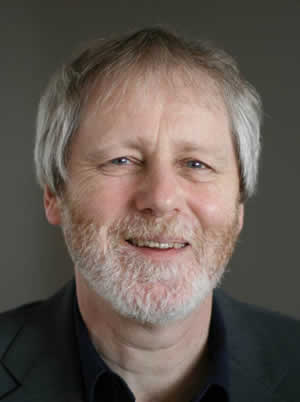Philip Russell

2015 President Philip Russell is Directors at the Max-Planck Institute for the Science of Light (MPL),
a position he has held from January 2009, when MPL was founded. He also holds the Krupp Chair in Experimental Physics at the University of Erlangen-Nuremberg.
He was a professor in the Department of Physics at the University of Bath, U.K., from 1996 to 2005. During that time, he founded and led the photonics research group that in 2005 became the Centre for Photonics & Photonic Materials.
He obtained his D.Phil. (1979) degree in volume holography at the University of Oxford, the U.K. spending three years as a Hayward Junior Research Fellow at Oriel College. In 1982 and 1983, he was a Humboldt Fellow at the Technical University Hamburg-Harburg, Germany. From 1984 to 1986, he worked in research groups at the University of Nice, France , and IBM's T.J. Watson Research Center, U.S. From 1986 to 1996, he was based mainly at the University of Southampton. U.K.
For almost 30 years, he has specialized in the behavior of light in periodic structures as well as nonlinear optics, waveguides and optical fibres. In 2001 he started the company BlazePhotonics Ltd, a Bath University spin-out whose aim was the commercial exploitation of photonic crystal fibre. He has close to 300 journal publications and is the inventor on 37 patents or patent disclosures.
He was the founding chair of the Society's topical meeting series "Bragg Gratings, Photosensitivity & Poling" and has been a Fellow since 2000. That same year, he won the Joseph Fraunhofer Award/Robert M. Burley Prize for the invention of "for his invention of the photonic crystal fiber, an array of micron-spaced sub-micron holes allowing extremely large mode area single-mode fibers offering solid-core fibers with better power handling."
He has also been awarded the Applied Optics Division Prize (2002) and the Thomas Young Prize (2005) of the U.K. Institute of Physics. In 2004 he received a Royal Society/Wolfson Research Merit Award and in 2005, was elected Fellow of the Royal Society. In September 2005, he received the Koerber Prize for European Science from the Hamburg-based Koerber foundation. He was holder of an IEEE-LEOS Distinguished Lecturer Award from July 2004 to June 2006 and was a Director-At-Large of OSA from 2007 to 2009.
He is currently a member of OSA's Presidential Advisory Committee.
We live in a world in which progress in science, medicine and the quality of life increasingly rests on the latest imaging techniques—from the vastness of the Hubble Deep Field to the ability to identify diseased tissue, in real time and with unprecedented resolution, during a surgical operation. These and other imaging technologies are, of course, ultimately driven by optics and phtonics, and offer tangible evidence of the importance of our field.
Multimedia
Document Created: 26 Jul 2023
Last Updated: 28 Aug 2023
